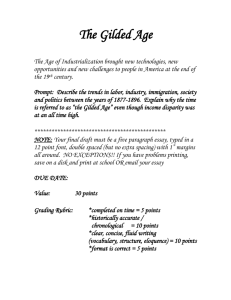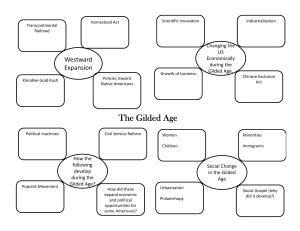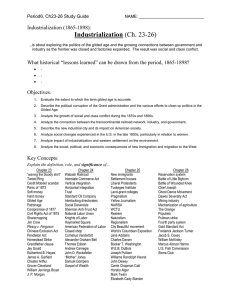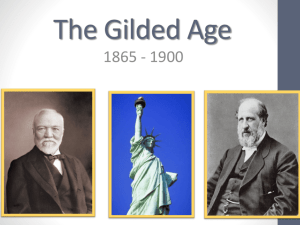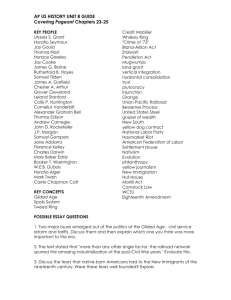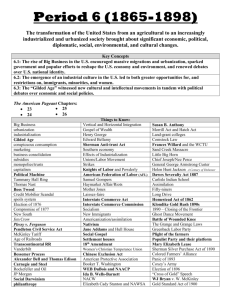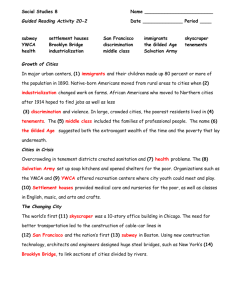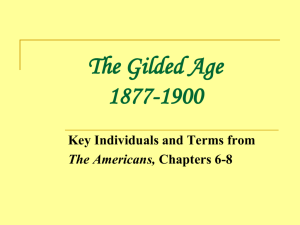Textbook Chapter 9 Questions
advertisement
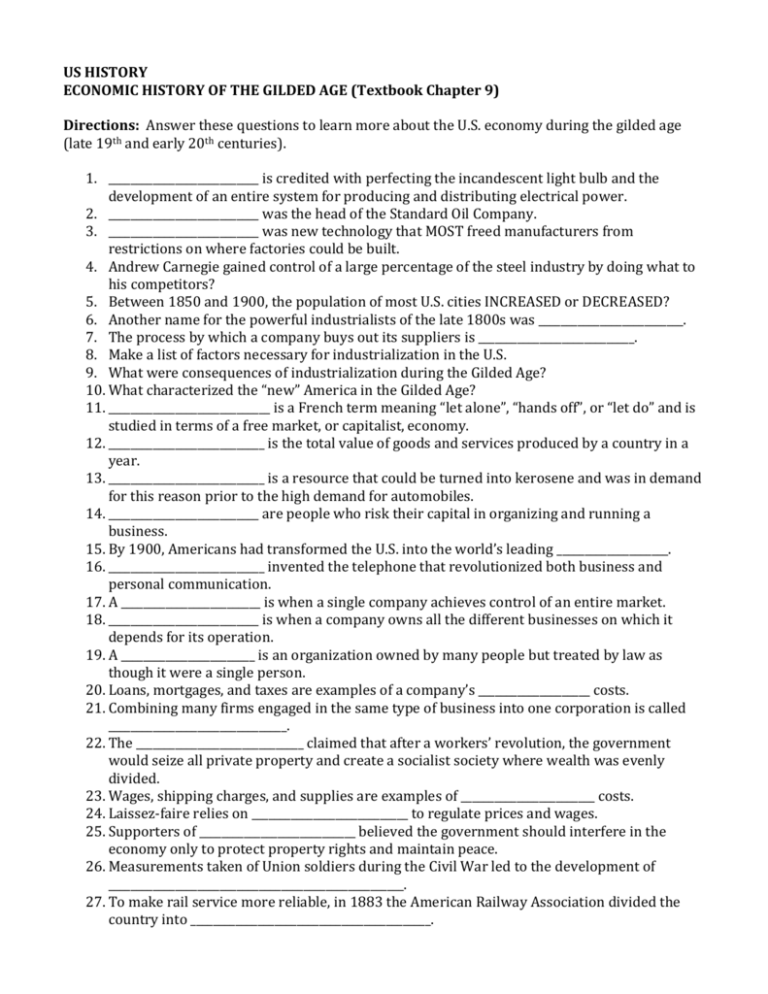
US HISTORY ECONOMIC HISTORY OF THE GILDED AGE (Textbook Chapter 9) Directions: Answer these questions to learn more about the U.S. economy during the gilded age (late 19th and early 20th centuries). 1. ___________________________ is credited with perfecting the incandescent light bulb and the development of an entire system for producing and distributing electrical power. 2. ___________________________ was the head of the Standard Oil Company. 3. ___________________________ was new technology that MOST freed manufacturers from restrictions on where factories could be built. 4. Andrew Carnegie gained control of a large percentage of the steel industry by doing what to his competitors? 5. Between 1850 and 1900, the population of most U.S. cities INCREASED or DECREASED? 6. Another name for the powerful industrialists of the late 1800s was __________________________. 7. The process by which a company buys out its suppliers is ____________________________. 8. Make a list of factors necessary for industrialization in the U.S. 9. What were consequences of industrialization during the Gilded Age? 10. What characterized the “new” America in the Gilded Age? 11. _____________________________ is a French term meaning “let alone”, “hands off”, or “let do” and is studied in terms of a free market, or capitalist, economy. 12. ____________________________ is the total value of goods and services produced by a country in a year. 13. ____________________________ is a resource that could be turned into kerosene and was in demand for this reason prior to the high demand for automobiles. 14. ___________________________ are people who risk their capital in organizing and running a business. 15. By 1900, Americans had transformed the U.S. into the world’s leading ____________________. 16. ____________________________ invented the telephone that revolutionized both business and personal communication. 17. A _________________________ is when a single company achieves control of an entire market. 18. ___________________________ is when a company owns all the different businesses on which it depends for its operation. 19. A ________________________ is an organization owned by many people but treated by law as though it were a single person. 20. Loans, mortgages, and taxes are examples of a company’s ____________________ costs. 21. Combining many firms engaged in the same type of business into one corporation is called ________________________________. 22. The ______________________________ claimed that after a workers’ revolution, the government would seize all private property and create a socialist society where wealth was evenly divided. 23. Wages, shipping charges, and supplies are examples of ________________________ costs. 24. Laissez-faire relies on ____________________________ to regulate prices and wages. 25. Supporters of ____________________________ believed the government should interfere in the economy only to protect property rights and maintain peace. 26. Measurements taken of Union soldiers during the Civil War led to the development of _____________________________________________________. 27. To make rail service more reliable, in 1883 the American Railway Association divided the country into ___________________________________________. 28. Department stores changed the idea of shopping by ________________________________________. 29. Because of the shortage of workers in California, the Central Pacific Railroad hired workers from ________________________________. 30. Why did Congress believe tariffs were necessary during the early days of industrialization in the U.S.? 31. Why did the U.S. government offer each railroad company building the transcontinental railroad land along its right-of-way? 32. Prices of many products increased as the U.S. became an industrial nation…TRUE or FALSE? 33. The Constitution bans states from imposing tariffs, helping goods to flow freely around the country…TRUE or FALSE? 34. Most unions in the late 1800s excluded women…TRUE or FALSE. 35. Laissez-faire advocates support high tariffs…TRUE or FALSE. 36. Describe jobs outside the home available to women after Reconstruction. 37. What led to the tremendous growth in U.S. population between 1860 and 1910? 38. How did population growth aid industrialization in America?
